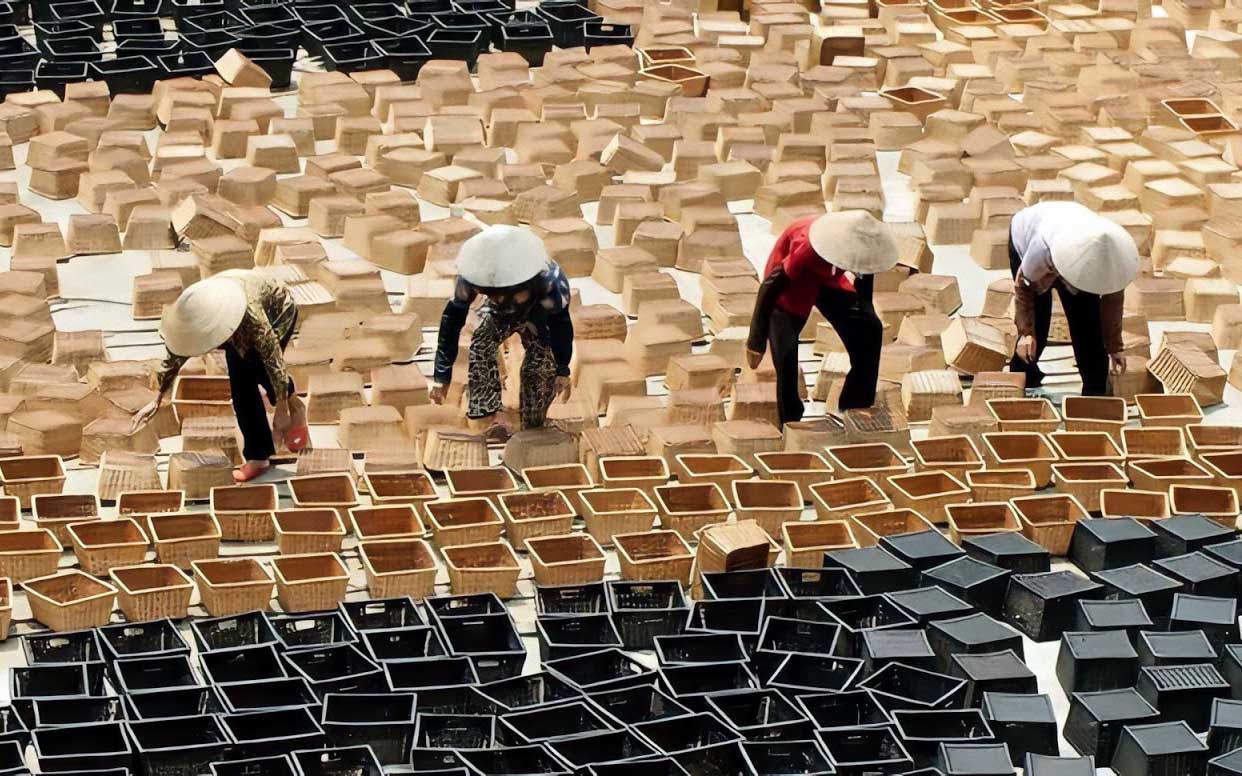Nowhere is the craft of weaving bamboo and rattan more refined than in Hanoi as the names of so many handicraft villages here have gone down in history, sayings, proverbs and the daily life of Vietnamese people. Mentioning all of hundreds of craft villages in Hanoi is an impossible task. But there is probably no one that has never heard of Phu Vinh, the home of bamboo and rattan craft making articles, the place that brought fame to the craft of bamboo and rattan weaving of Vietnam in general and of Hanoi in particular, in the international market.
Being a peaceful village, Phu Vinh lies next to bamboo groves. No one knows precisely when the craft began except that from the beginning of the 17th century, the first craftsmen from this village had managed to make closely woven baskets and other woven household appliances at Km27 from Ha Noi City centre. Phu Vinh is not the only place where people go to buy charming vases, baskets or dishes for arranging flowers. There are many other bamboo and rattan weaving villages in Hanoi such as Truong Yen, Dong Phuong Yen, Binh Phu, and so on. But Phu Vinh is a unique place where people can find delicate woven rattan articles. Most impressively, the village’s spun rattan ware objects are so stunning that no other product can compare with them. Rattan is so rustic that, at first glance, it is impossible to find its “craft” feature. However, with skilled hands, people in Phu Vinh village turn such ordinary rattan into priceless works of art. Almost every villager in Phu Vinh knows how to weave and they do it skilfully. No one is capable of counting how many types of woven bamboo and rattan articles have been created by Phu Nghia’s generations of artisans and weavers, from baskets, handbags to dishes to vases, etc.
Using ampelocalamus and neohouzeaua as the material is not as easy as it seems. The old, premature and young trees are used to make rims, strips and extremely thin strips, respectively, which are then braided to create flowers and ornamental patterns. This craft requires weavers to have skilled hands indeed. They have to be experts at using knives to split the trees into identical flat strips in order for the final products to turn out beautiful. They have to pick the splints one by one and it is necessary for all of the splints to have the same softness and toughness. After being shaved, such trees will be very white if it is sunny but they may be mouldy if it is rainy; therefore, craftsmen need to dry strips or even soak them in anti-termite chemicals. It also requires a lot of technical capabilities to dye strips so that they will not fade, creating a world of colors on flower baskets, flower vases, betel trays, clothes containers, planting baskets, trays, etc.
The craft of weaving bamboo and rattan in Phu Vinh is so developed that artisans here can look at photos and find out the way to make portraits or landscape woven pictures from them. What they can create are no ordinary woven bamboo and rattan products but rather works of art. Perhaps for this reason, Phu Vinh’s woven bamboo and rattan articles are very popular with foreign visitors, who bring them back to over 100 countries and territories around the world. As the years go by, the art of Phu Vinh’s weaving bamboo and rattan really becomes outstanding with generations of artisans and craftsmen always carrying the messages of their forefathers: “Being good at a job brings glory forever”.









